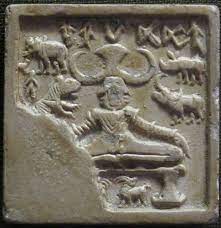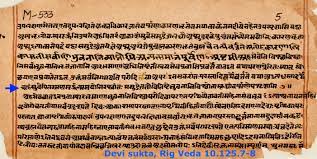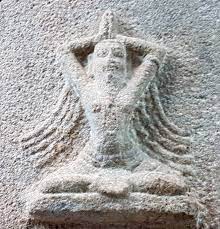Is Yoga a Religious Practice?
- Nancy Button

- Mar 31, 2024
- 6 min read
As Spring and New life is being greeted across the globe with festivals, holidays, and religious celebrations, I think it is a good time to revisit the discussion in yoga regarding religion.
First, let's start by putting that question - is yoga religious? - into its historical context for our contemporary society. The more context we can put around our yoga practice, the more we can stay connected to its roots, intentions, and other people. Yoga is a connective practice so I feel that the discussion surrounding religion and yoga should be equally connecting and not divisive. Just as many festivals, celebrations, and religious holidays coincide in one season of the year, I find that the connective threads of history, philosophy, and yoga help us to answer this question.
Summary: The practice of yoga is rooted in ancient civilizations, rituals, and philosophy that are highly adaptable. Practitioners of yoga can incorporate their own beliefs within these systems, or practice yogic techniques separately. You can practice yoga regardless of your faith or beliefs. Rather than thinking of yoga as either religious or not, contexts helps us to choose how we practice what we believe.
Historical Context:
The yoga history that begins the "is yoga a religion?" discussion is called the Vedantic Period of Yoga. The roots of yoga found in prehistoric India and historic India.
For many (most) the storied history of yoga begins in the Indus Valley. That's the first known location and marker as to why yoga can make the claim that it's over 5000 years old. The "proof" rest in various artifacts from the Harappan civilization. As contemporary practitioners of yoga, we trace a lot of our practice back to this very peaceful civilization with icons of seated figures relative to our known yoga figures. Evidence of yoga is implicit through the study of artifacts. Artifacts which may, or may not have had religious significance. Because no written documents have yet been unearthed, we make inferences about the icons based on other documented images later that have names and purposes, some of which are religious. We do see figures in seated yoga postures without knowing yet if they are religious.
The Indus Valley is where we start to see divergence in religious origins. Maybe you remember in ancient histories classes taught through a Eurocentric lens in school started with agrarian societies in the Mesopotamia valleys the civilizations of the Indus Valley were more sophisticated than the Mesopotamian region.
Why am I telling you this and how does it relate to yoga? It's a way for us to understand that sometimes if we take only one lens to look at our history, then we can miss some things that are very, very important. Western laws and belief systems that inform our world view came from one area of the world and evolved, Eastern world views and belief systems evolved at the same time but in very different ways. Thus question of if the practice of yoga and how it is understood as religious, philosophical, spiritual, or atheistic is informed by your primary world view. If you are more westernized, your concept of religion is different than an eastern view as religions bubbled up in different times for different reasons.
Ancient artifacts from the Indus Valley are the early relatives of later written texts found in present day India and throughout South Asia. The oldest written texts are the Vedas, from which we get the traditions of yoga explicitly.
Veda means to know. Thus, the original scripts and written documents are all about knowledge. They're literally preserving the knowledge of thousands of years. It’s the same knowledge that we use in various different forms in our yogic practice today. There are four primary veda's from the Vedantic era. There have been variations and spin-offs or prequels or sequels in various different forms. But these are the four primary documents:
Rig Veda:includes the creation story. The creator in the creation story becomes Indra or Rudra, the beginning of era of the Vedic gods.
Same Veda:is the song part of the Rig Veda. It's considered more devotional and more spiritual, where you might take kind of the rigid stuff of the Rig veda and make it into something delightful.
Yajur Veda: comes later. It is the most ritualistic and prescriptive. Because of that, it becomes kind of the foundation of a religion that we know of now.
Finally, there's the Atharva Veda, which is written down by a singular dude. He is probably well learned. This becomes the foundation of the ayurveda, which is the science of life. Most of the eastern medicine that we know of points back in some sort of way to atharva veda.
From artifact to written from, the question and usage of what yoga was and how it relates to what yoga is now continues to evolve. The practices of Vedic Yoga was to connect individuals to the unknown natural world through the known natural elements.
Knowing that the Vedas do have some basis in ritual, is yoga a religion?
The Vedas, although they are ritualistic, were constantly adapted. They were first based in the natural world. Then the rituals are adapted to appease certain natural phenomena. Later on in the evaluation of Vedic rituals they became integrated in showy parties and celebrations where the people who had a lot of money could hire the priests to do the very fancy Vedic rituals. To those people, they may or may not have also been spiritual or religious.
Can I maintain my own religion and practice yoga?
The practice and use of ritual at the beginning of historical yoga was for many different reasons. All yogic practices are based in a philosophy, which is generally atheistic.
The Samkhya philosophy of vedantic yoga is atheistic. The underpinning philosophy does not name a god or any gods. The Vedas eventually give a name to creator as Indra or Rudra or Yama. They name creators, the creative process, or name the personification of elements. Later, that gets taken to be a god over that element. I have understood the purposes of Eastern mythology as always maintaining a deep understanding that even if we call them a god, they are still symbolically. Gods can be experienced as metaphor or literal. Gods, or divine characteristics can be realized as part of you, or outside of you. This is why ancient texts are more poetic then prescriptive; they are open to personal interpretation. Therefore, you can easily transpose the name you use for each concept/god to the name that you are familiar with from of your religion or experience.
For example: when I'm learning the story of Indra, the thunderbolt god, I am reminded of how alike the Vedic gods are to Greek mythology and to Norse mythology (versus the Hindu mythology which is different) and can relate. I understand the concept of lightening and I can reflect on that inside of me which correlates. What is that fierceness? What is the thunderbolt inside and how do I wield it justly? I can extend that to the creation of my own life. Just as they adapted stories in ancient Harappan society, how am I the creator in my own story?
For example, one of the stories surrounding the Harappan seal is observing that she is still sitting completely in the half-lidded state, meaning she has a drishti gaze undisturbed by the various different animals around her. So then, can the animals be symbolic to all of our many distractions around us and how we can maintain and stay focused? Can I use ancient wisdom and reflection to continue to practice yoga now? Yes! Of course. We are connected to the same natural elements, distractions, and joys.
The history of yoga is deep, and long, and connected to various different religions just as Spring time and the returning daylight. Yoga is a practice of awareness: experiential & existential. It is based in philosophies that are adaptable. Yoga is highly adaptable. Even the philosophies that yoga is based in are highly adaptable. You can identify your religious beliefs or atheistic practices or whatever in between help you through yogic practice to adapt better that which makes you a better human.
So is yoga religion? Do you know how to answer that now? Are you starting to think about how to answer that now?
But by giving you context to help understanding about the Vedas and ancient philosophies and societies to ask yourself about how or why you choose to practice yoga, it complicates the question. a bit. Maybe your yoga practice is religious for you. Maybe your yoga practice is connected to your religion. Maybe your yoga practice is ritualistic without being religious.
What do you say?
Is yoga a religious practice?
How do you practice yoga?











Comments